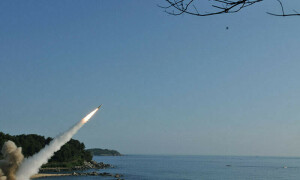CALVISANO: With pools 85 times the size of the nearby pitches where Rugby Calvisano plays, the company Agro Ittica Lombarda is putting this northern Italian town on the map again — as the world’s top caviar producer.
The story began in the late 1970s, when the town’s steel mill teamed up with a Californian biologist to use the heat generated by the mill to warm pools to raise sturgeons, whose eggs are used to make the salty delicacy.
The world’s most prized caviar comes from wild sturgeon in the Caspian Sea.
Agro Ittica was the first sturgeon farmer in Europe and well positioned in 1998 when under CITES, the international convention to protect endangered species, fishing of the Caspian sturgeon was restricted, then banned outright in 2010.
The caviar industry has since shifted to farming the fish across the globe, from China to Israel to Uruguay. France, Russia and the United States are also major producers.
While most consumers associate caviar with Russia, Agro Ittica points out that sturgeons were historically found in many parts of the world, including Italy.
“The sturgeon is closely intertwined with Italian history, you see it in Renaissance painting and even Roman sculptures,” said Agro Ittica’s export director John Giovannini, citing the writings of 15th century writer Bartolomeo Platina.
But “it disappeared from Italian rivers in the 1960s due to dams and pollution,” he added.
Now 60,000 sturgeons swim in Agro Ittica’s pools: white sturgeons from North America, the Adriatic and Siberia as well as the belugas that produce the largest eggs that made Caspian caviar famous.
A separate farm in the Ticino wildlife park to the west of Milan raises Russian sturgeon that produces smaller eggs used to make Osetra caviar, known for its nutty flavour.
Pope’s salt
When the females are ready, they are taken to the Renzo Zanin, the “Caviar Master” at Agro Ittica Lombarda. After knocking them out, he deftly removes the egg sac.
The roe is quickly transferred to a room kept at five degrees centigrade, where it is massaged by hand on a sieve to separate the eggs from the sac without damaging them.
Then the eggs are rinsed using a patented method that keeps them from clumping together.
Zanin, who trained in Russia and Iran before joining Agro Ittica in 1996 when the company began commercial production of caviar, inspects and samples the various eggs. He photographs them and takes notes.
“For each fish we note the species, the age, the year, the weight, egg yield, their size, colour, appearance and taste,” said Agro Ittica’s chief executive, Lelio Mondella. “When you produce 25 to 30 tonnes of caviar per year, it is important to know exactly what you are selling.”
Next the eggs are salted, which is what turns them into caviar.
Zanin takes a pinch of Cervia salt, or what he called the “Pope’s salt”, from Italy’s Adriatic coast and considered less bitter than other sea salts.
Three per cent of the weight of the eggs is the dose for lightly salted caviar. Then the eggs are packaged for ageing: from three months minimum to up to 15 years. The containers are covered with plastic film to let air escape as fermentation slowly proceeds.
Less than 20 minutes has passed since the sturgeon arrived.
“That is critical,” said Zanin. “Otherwise the eggs soften and become fragile.”
First class, middle class
Agro Ittica has become the top global producer, accounting for a fifth of the 150 tonnes produced worldwide each year.
Its $26 million in sales last year were mostly to Russia — which can’t make enough of it and chose not to include caviar as part of its embargo on Western food products — as well as the United States, France and parts of Asia.
Agro Ittica sells its caviar under different labels to different market segments.
The Calvisius brand targets high fliers, whether they are in top of the line shops in New York, London and Paris or in the first class sections of airlines.
Its Caviar Club brand targets a wider market via supermarkets.
With many consumers still feeling the pinch of the global economic crisis, Agro Ittica’s chief executive Mondella said the small jars of 10 or 20 grams “allow everyone to experience caviar, like champagne by the glass”.—AFP
Published in Dawn, March 26th, 2015
On a mobile phone? Get the Dawn Mobile App: Apple Store | Google Play










































Dear visitor, the comments section is undergoing an overhaul and will return soon.